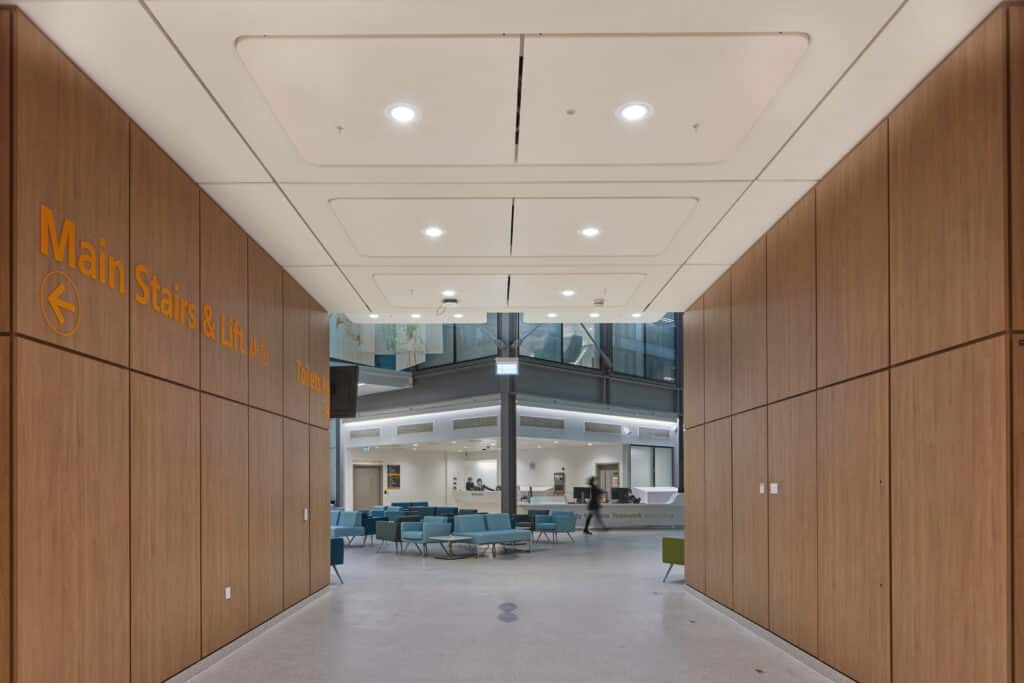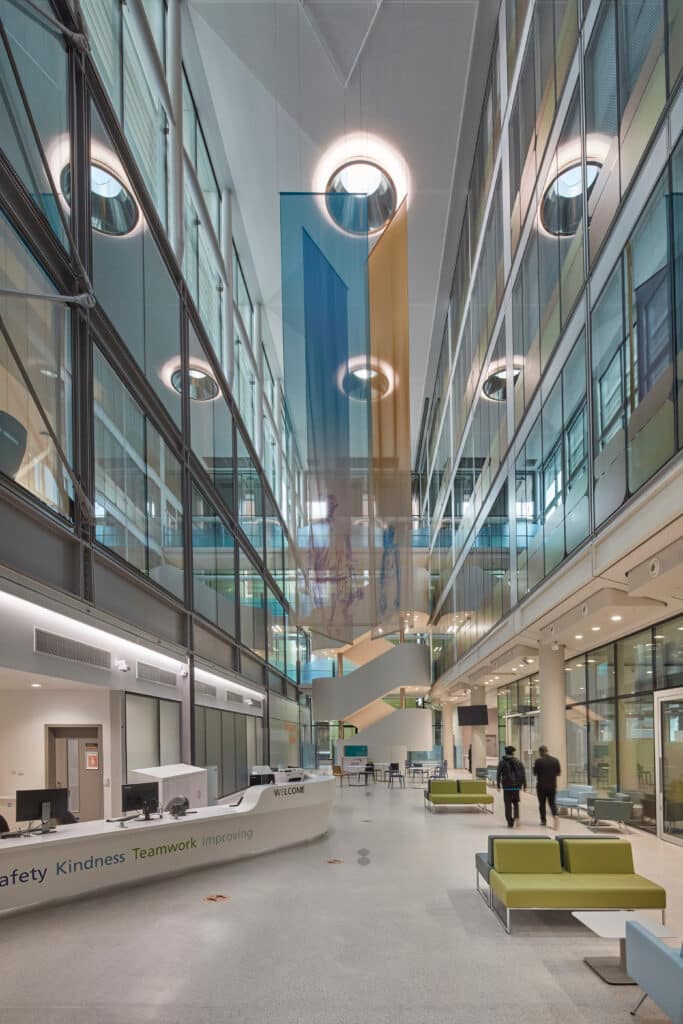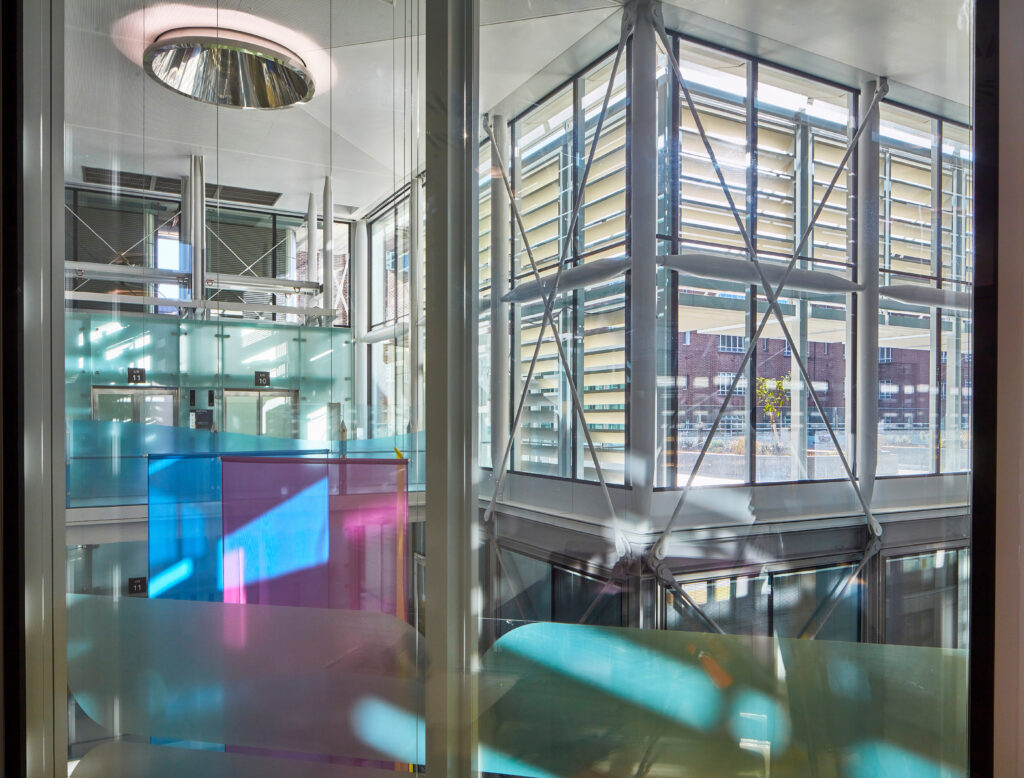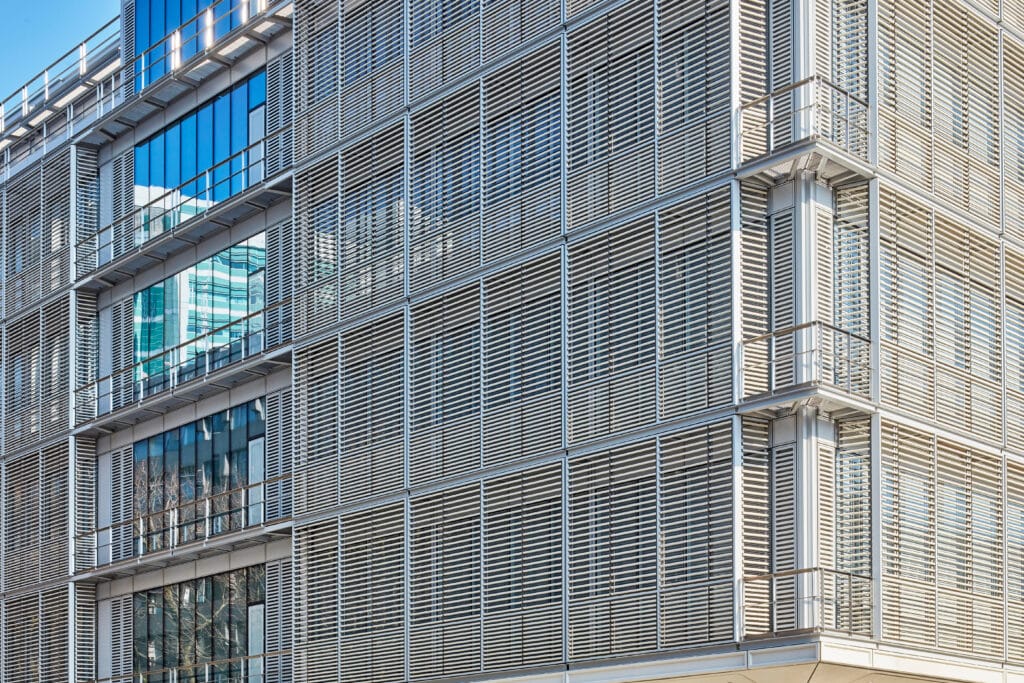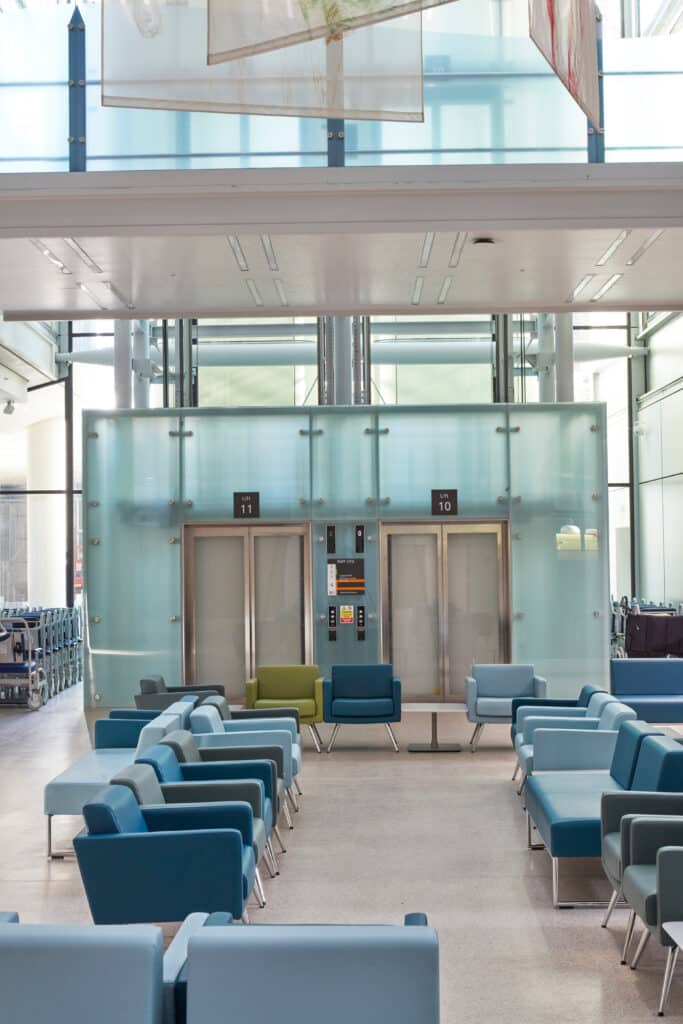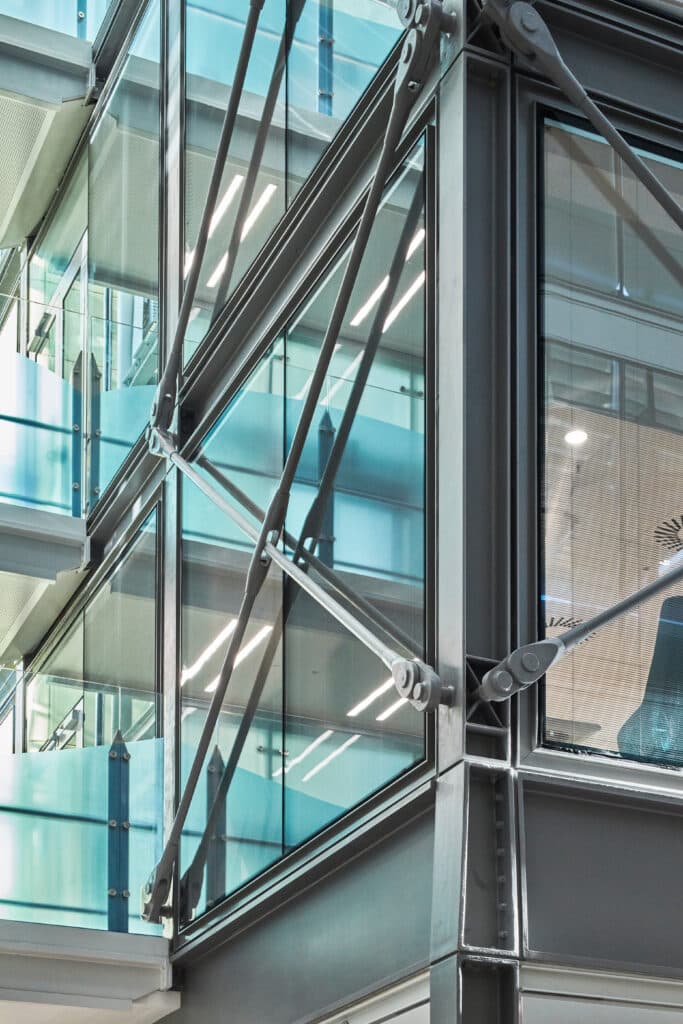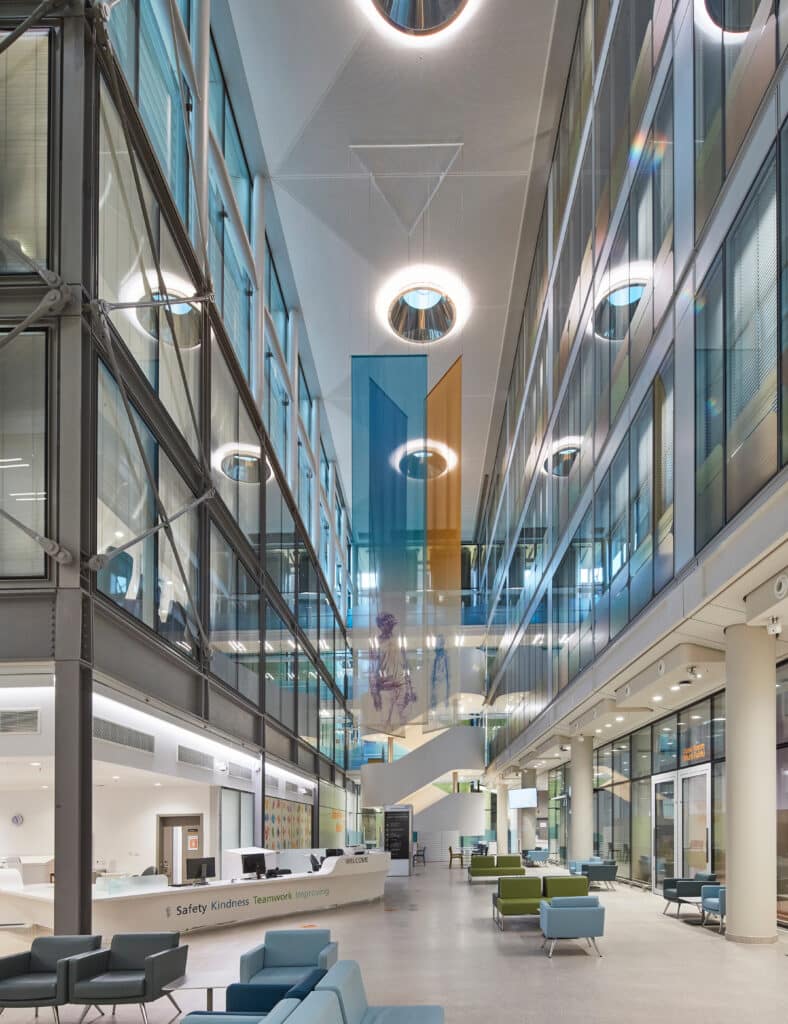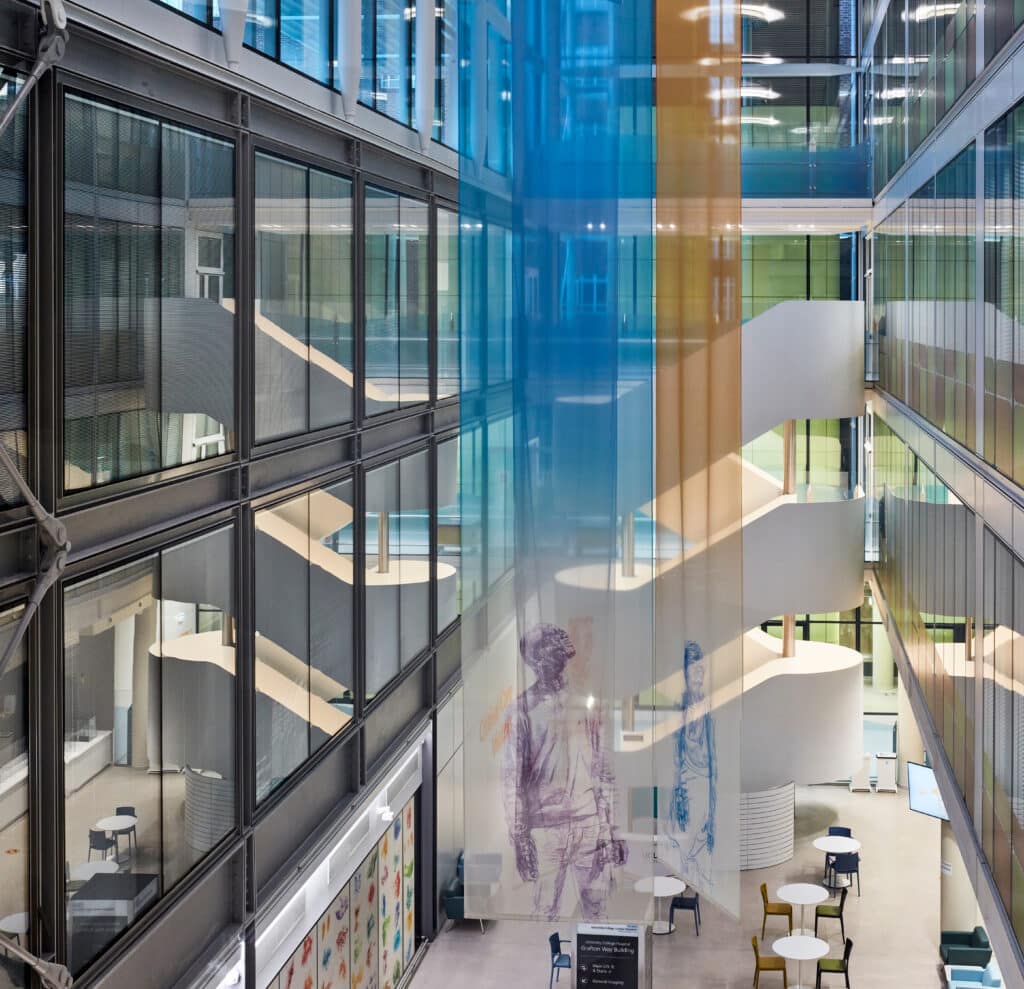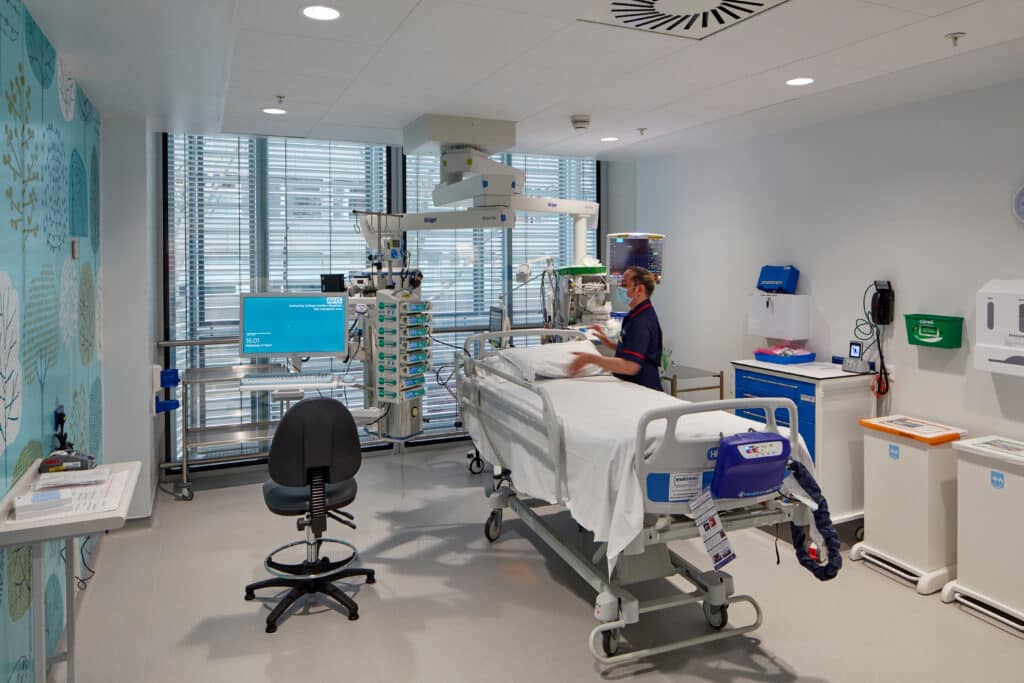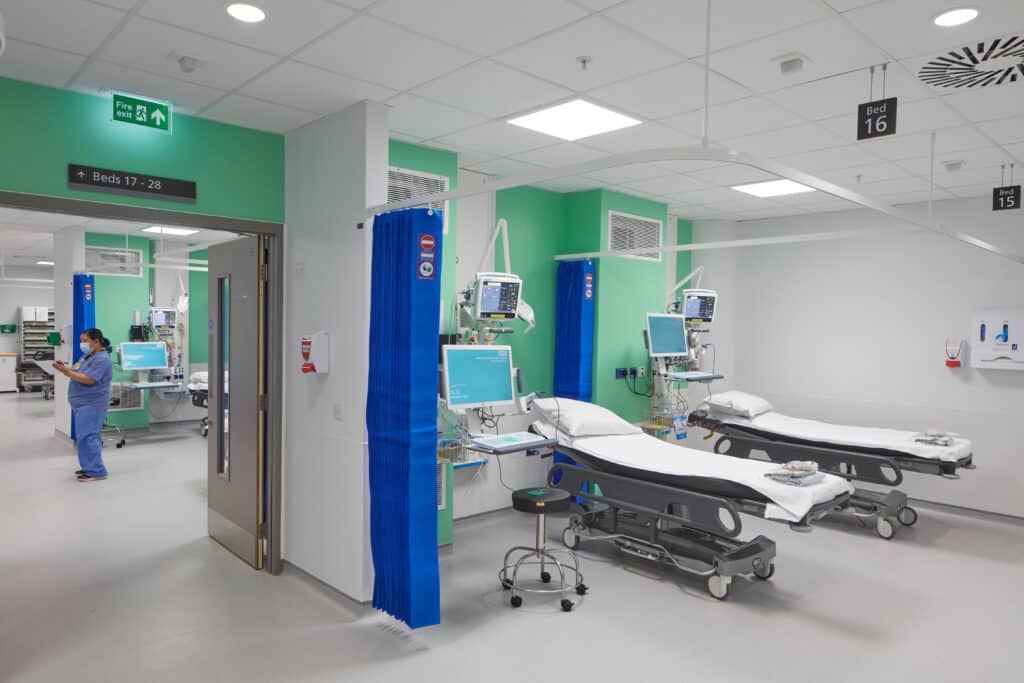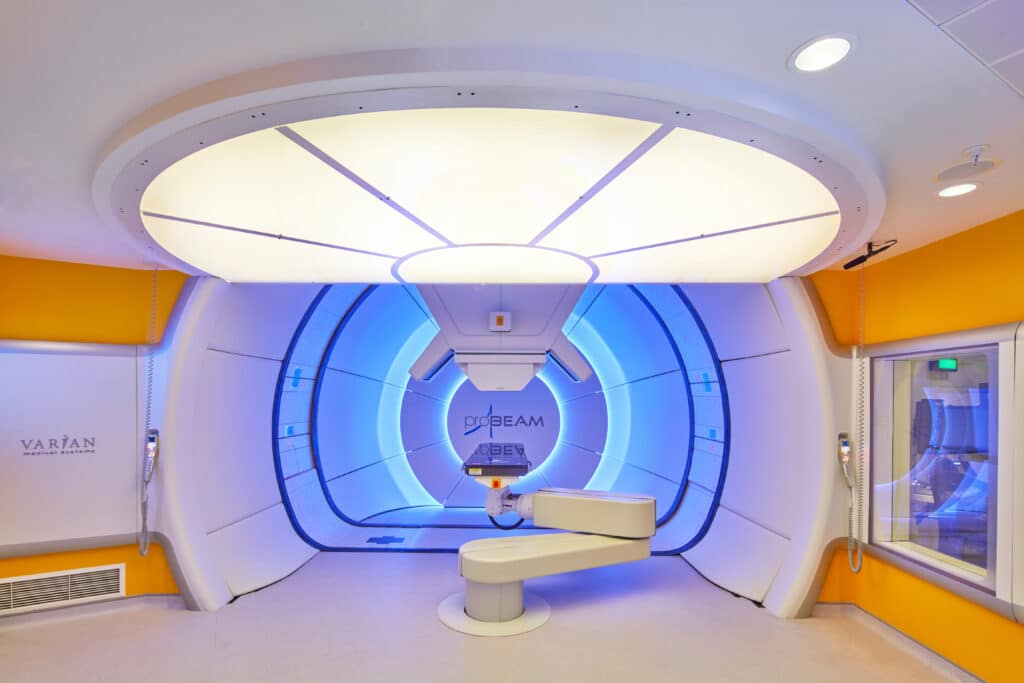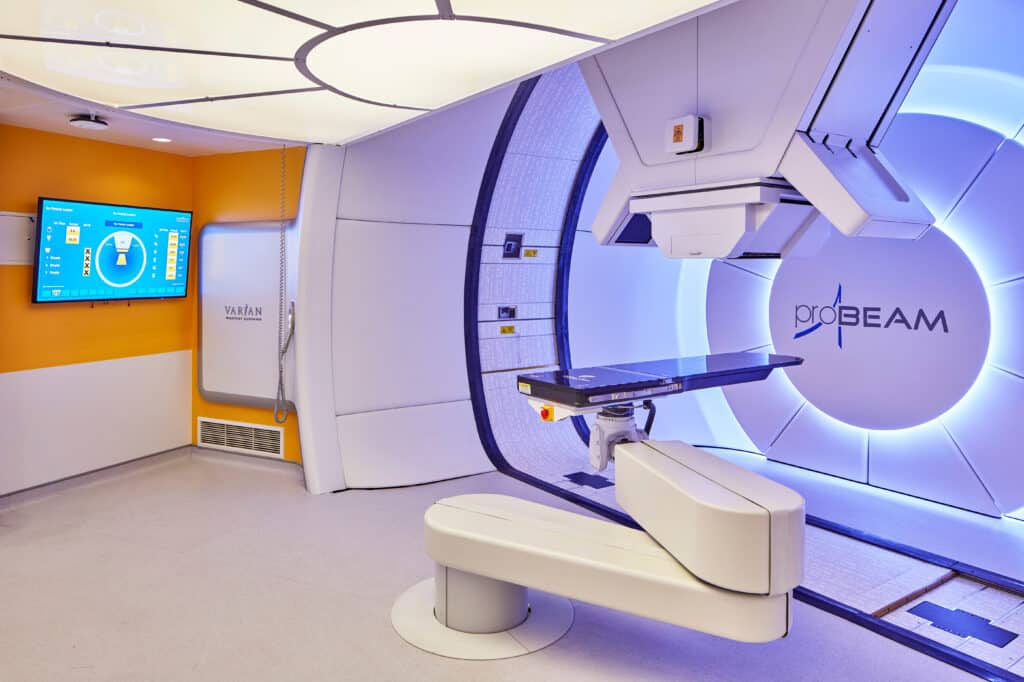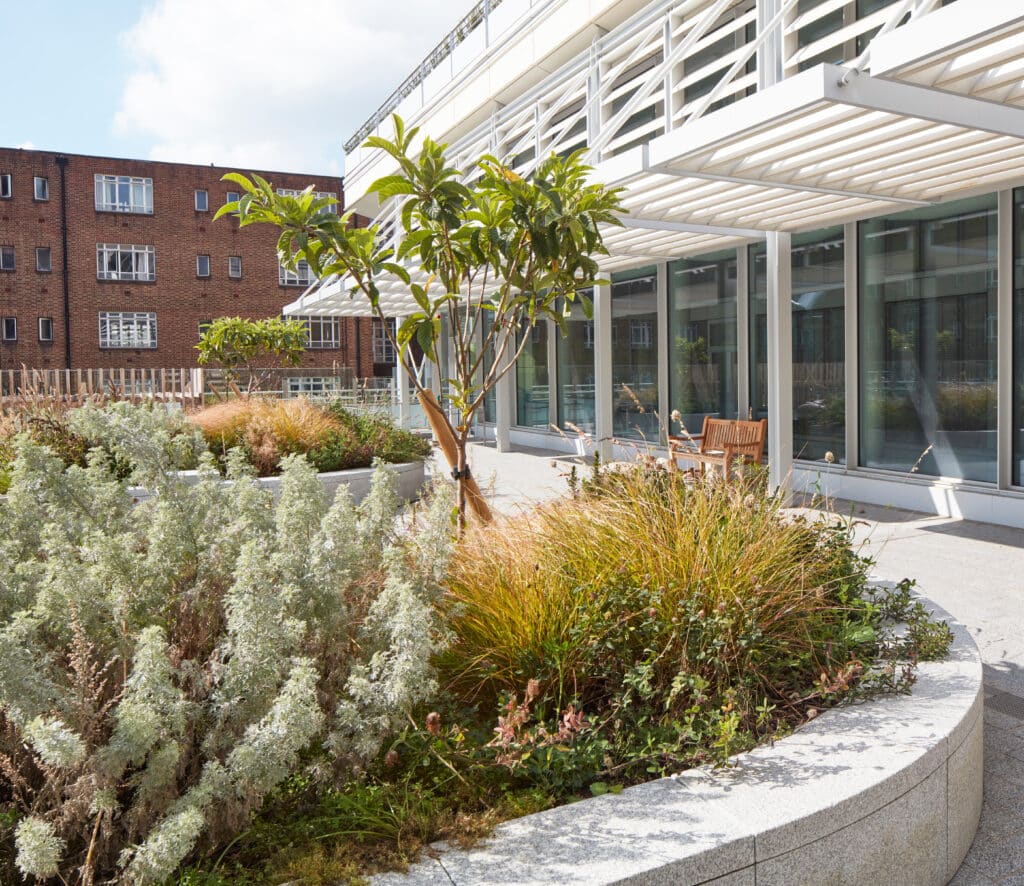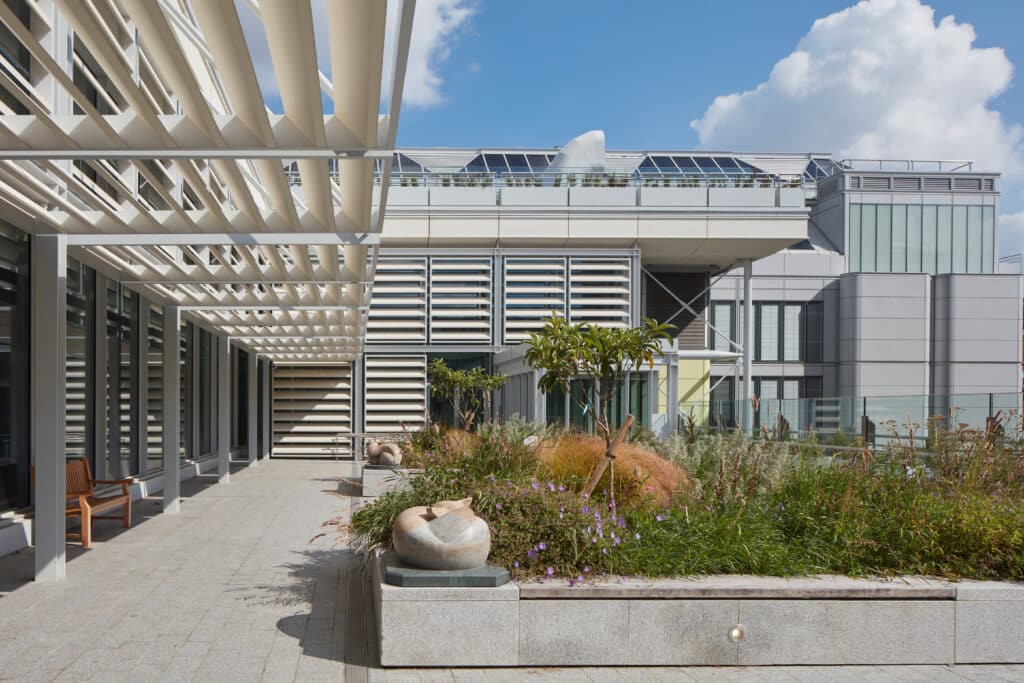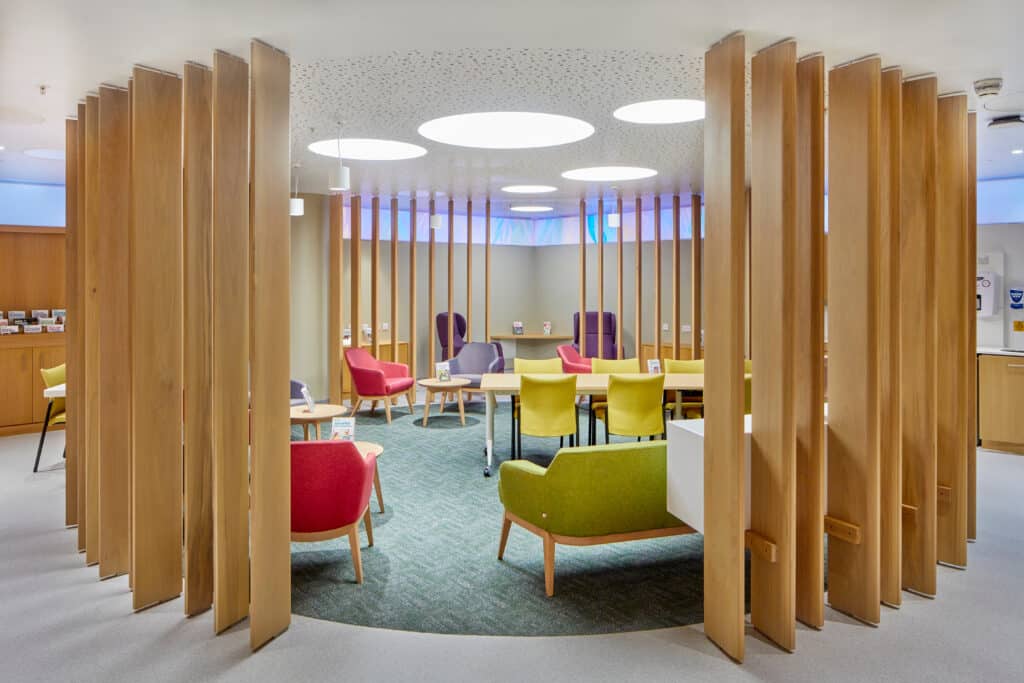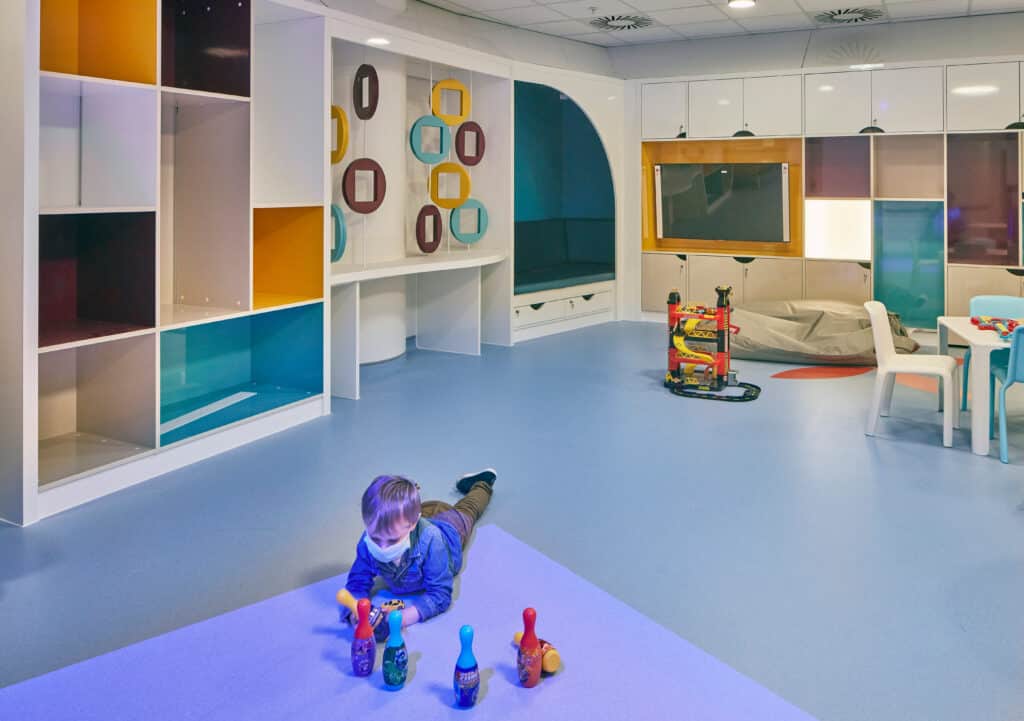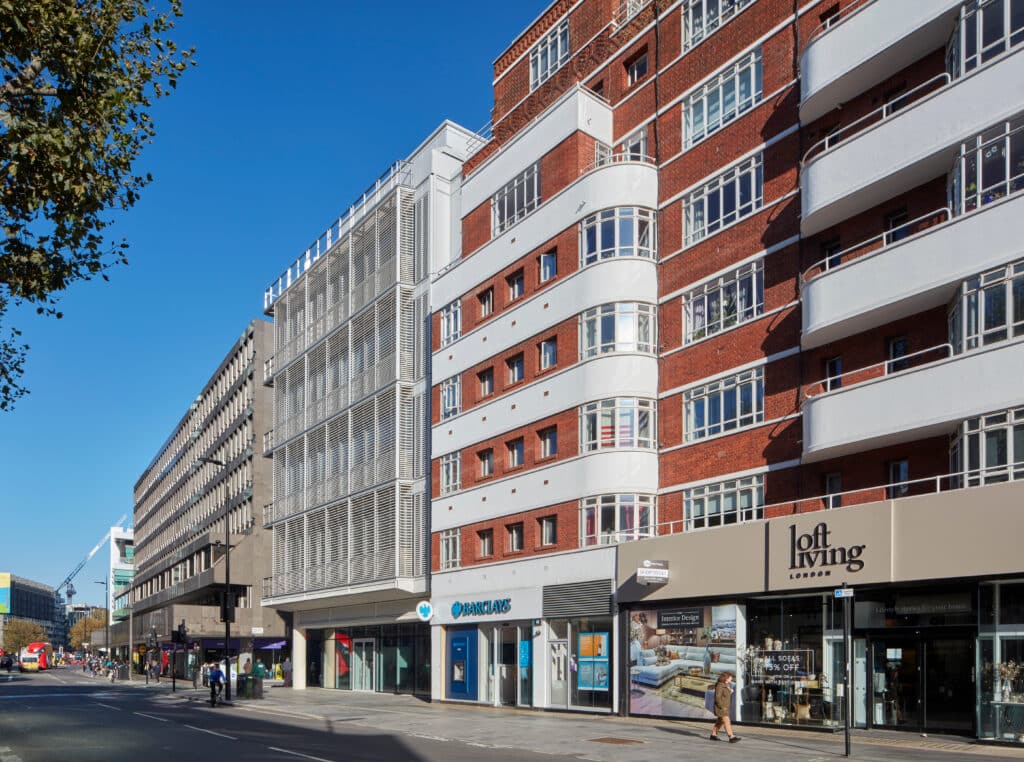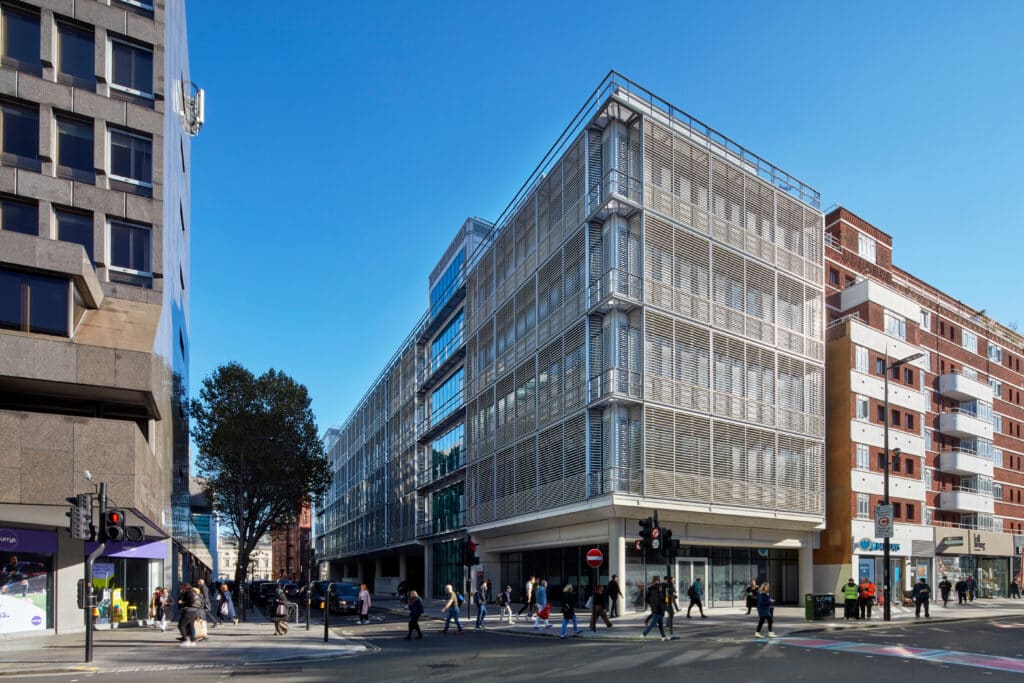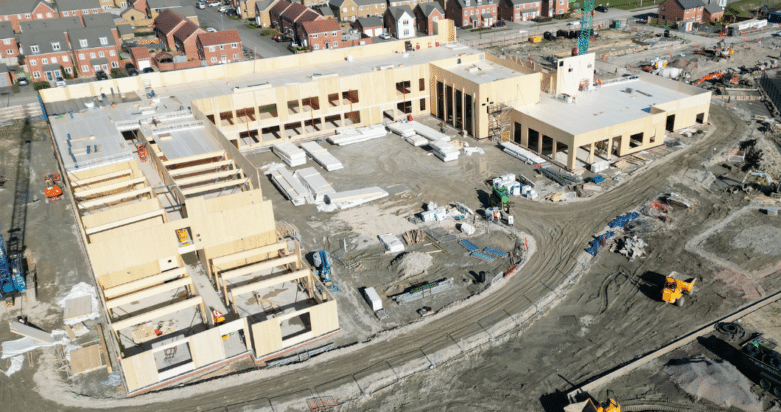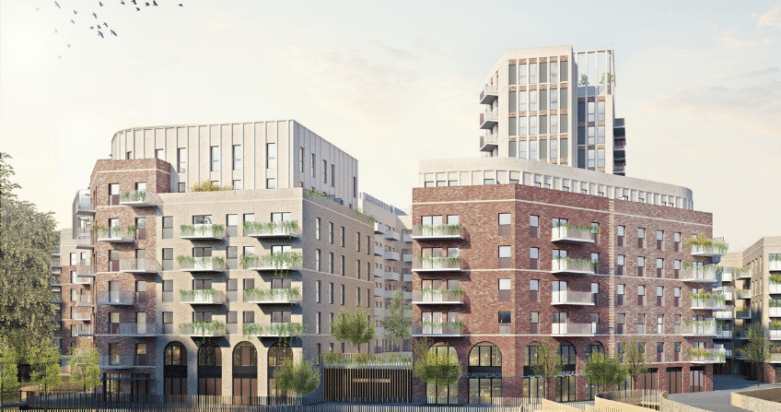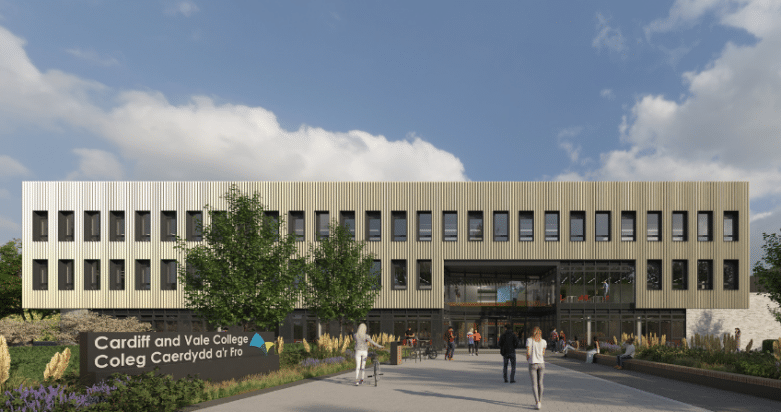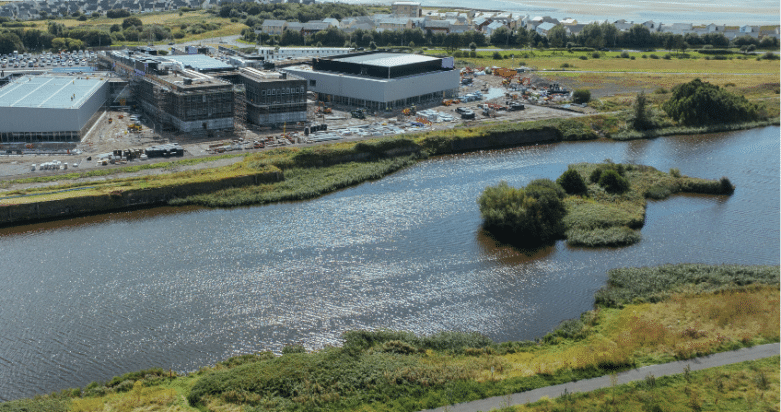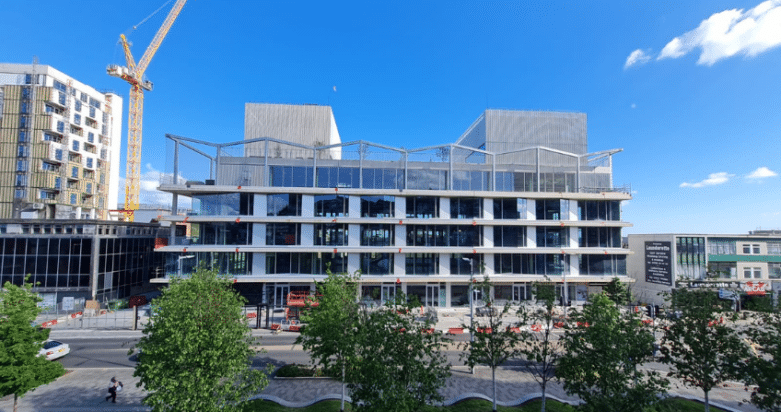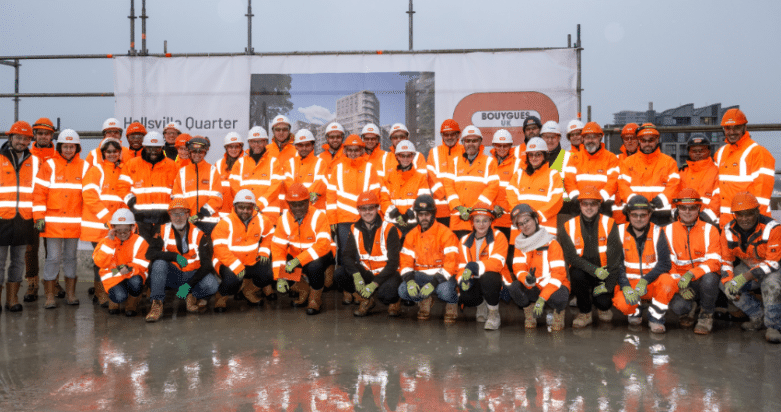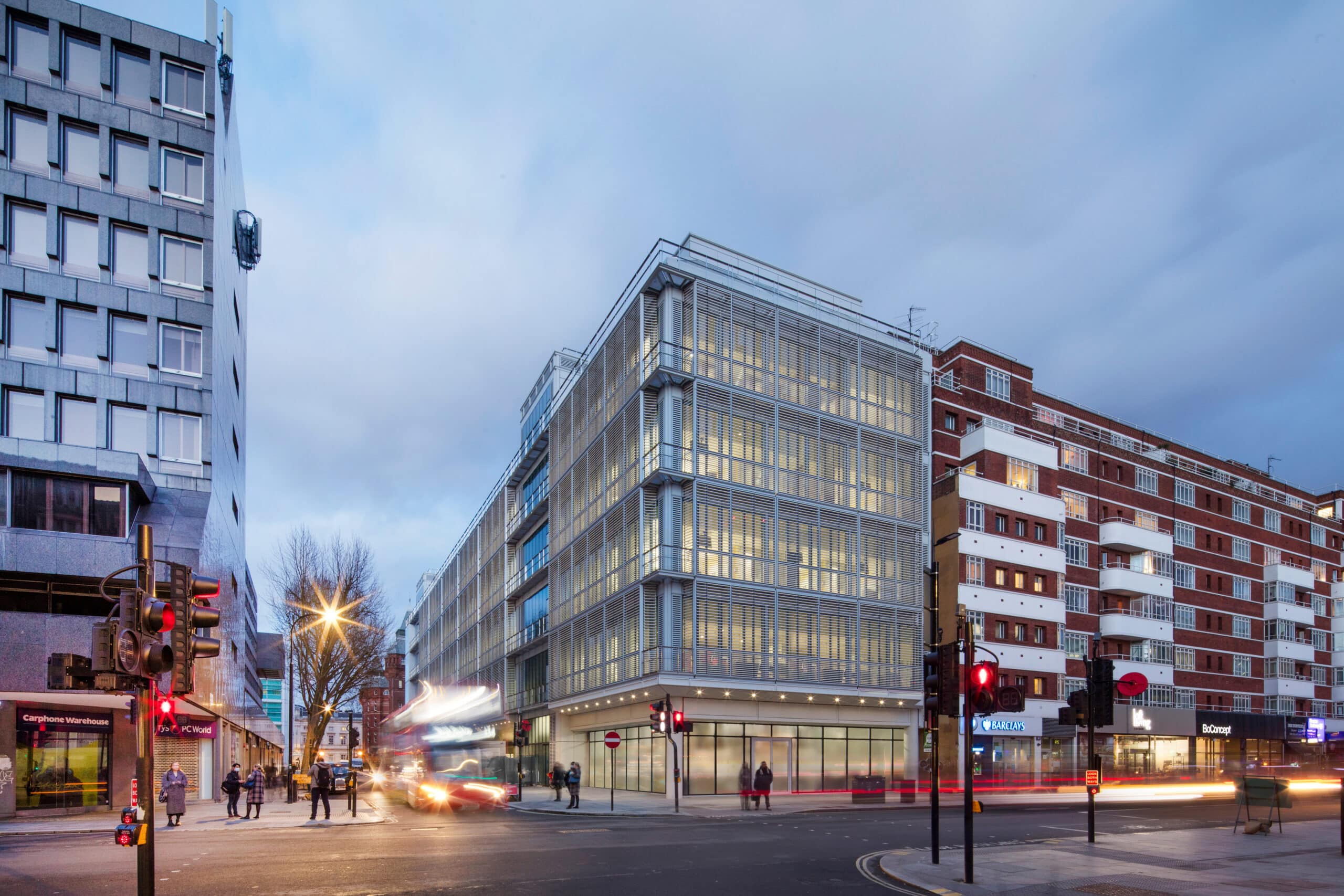
New World-Class Cancer and Surgery Centre for University College London Hospital
Leading construction company Bouygues UK has completed the University College Hospital Grafton Way Building, a major new central London healthcare facility incorporating a revolutionary proton beam therapy centre.
Created for University College London Hospital (UCLH), the landmark building also includes eight operating theatres, a surgical recovery area, a surgical ward, an imaging centre, a ten-bed critical care unit, three floors of inpatient haematology wards. The completion marks the creation of one of Europe’s largest dedicated haemato-oncology hospitals which will provide treatment for those with complex cancers and blood disorders.
The centrepiece of the £380million facility is a state-of-the-art proton beam therapy centre, only the second of its type in the UK. The facility will treat 650 people with cancer and benign tumours each year, around a third of whom will be children and teenagers. Proton beam therapy is able to deliver highly targeted treatment that pinpoints a tumour while sparing the surrounding tissue, making it particularly beneficial for younger people as it protects IQ, general growth, and fertility.
The new, 34,600 sq m building is situated in a tight site within the Bloomsbury conservation area, close to two Grade II-listed UCL buildings and London Underground lines. To create the necessary clinical space while respecting protected views and surrounding heritage, the 13-storey building, designed by Scott Tallon Walker Architects in association with Edward Williams Architects, includes a five-storey, 28-metre-deep basement equivalent in volume to the Royal Albert Hall. The construction was project managed by AECOM for UCLH.
This complex project has involved around 3,000 people in its construction, which included the removal of 80,000 cubic metres of earth from the site. The proton beam therapy centre required shielding around the equipment which includes 44,000 cubic metres of concrete to form walls typically two metres thick, with areas up to five metres, reinforced with approximately 8,000 tonnes of steel.
Above ground the seven-level concrete-framed structure forms the L-shaped ‘perimeter’ building which sits along Grafton Way and Huntley Street. Sitting in the space in the middle is the lighter steel framed courtyard building which is above where the PBT gantries are situated a few storeys below. A covered atrium fills the space between this ‘pavilion-like’ courtyard building and the perimeter building whilst connects are provided through a series of lightweight stell bridges. Externally a series of garden terraces have been created on the roofs of the courtyard to create a sanctuary for patients.
UCLH Chief Executive David Probert, said: “I am immensely proud of the Grafton Way Building. Delivering healthcare is the work of people, but well-designed buildings make a huge difference to how effectively this can be achieved. Our new Grafton Way Building overcomes design and build challenges to deliver a comforting environment for patients alongside the very latest technology and equipment for our staff. A complex building programme, made more so with the final stages taking place during the global pandemic, I congratulate everyone involved”
Fabienne Viala, Chair of Bouygues UK, said: “We favour complex projects where we can add value through our global experience and technical expertise. This new state-of-the-art facility for UCLH is one of the most complex public building projects ever undertaken. Its successful delivery is a result of collaboration, both amongst Bouygues colleagues and with UCLH and the wider project team, and it’s hugely rewarding to see the first patients beginning their treatment here, highlighting the potential that this facility has to transform people’s lives.”
Sheila Carney, Director of Scott Tallon Walker Architects, speaking for STW and Edward Williams Architects said: “We are incredibly proud of our team that was responsible for the design and delivery of this landmark building. The pandemic has further emphasised the importance of excellent healthcare for patients in a modern considered environment designed to benefit the well-being of all users and promote recovery times. The design embraces the principles of direct visual access to natural daylight, nature and landscape and maximises the use of natural materials and colour palettes throughout. The huge success of this project is a testament to the dedication, hard work and determination of a truly remarkable collaborative team and to the vision of UCLH and our successful collaboration with Bouygues UK to deliver this project.”
AECOM Project Director Sam Danquah said: “Almost six years ago, I stood on the site of a demolished cinema and hospital at Grafton Way, envisioning how we were going to project manage the build of something larger than the Royal Albert Hall beneath my feet. Little did we know then the challenges that would come our way, from a global pandemic to Brexit – let alone the sheer complexity of constructing a hospital above ground and installing life-changing proton beam therapy equipment below ground. Through problem solving, strong governance and project controls, we met an ambitious delivery programme and budget. Seeing UCLH’s vision for a world class healthcare facility in action brings an enormous sense of pride, not just in what the delivery partners achieved through collaboration, but in what the facility can to do transform patient outcomes”
The project is a result of close collaboration between:
- University College London NHS Foundation Trust (Client)
- AECOM (Client’s Project Manager [NEC contract duties and PBT equipment installation], Specialist Risk and Programme Manager)
- Bouygues UK (Main Contractor)
- Scott Tallon Walker (Lead Designer)
- Scott Tallon Walker in association with Edward Williams Architects (Architects)
- CampbellReith (Structural, civil, and geotechnical consultants)
- WSP (Mechanical & Electrical Engineering Consultants)
- UCLH’s advisers also include: BDP, Arup, Curtins, Ridge, Turner and Townsend, Medical Architecture
ENDS
Notes to Editors:
Key facts about the building:
Over 120 subcontractors were involved in the delivery of UCLH. The hospital building has five levels below ground and six levels above. The deepest point is 28.5 metres below ground and the basement measures 87 metres long by 67 metres wide. 80,000 cubic metres of ground has been removed from the site, equivalent to around 640 London buses.
- Capacity for 167 beds in total. This is split as follows:
- Haematology (blood cancer): 82 beds
- Critical care: 10
- Surgical: 32
- HCA (private healthcare – on floor 5 and half of floor 4): 43 beds due to open February 2022
- The whole facility is just under 35,000 square metres:
- Below ground: 10,600 square metres
- Above ground: 24,000 square metres
- There are nine floors for clinical.
- Three further floors house the plant required to run and maintain the facility.
- The PBT centre is spread over four levels below ground and will house four treatment rooms.
- The height of the building (including below ground) is 57 metres, making it as tall as London’s Tower Bridge.

